The MASTABA
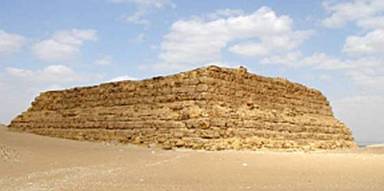
Before the building of pyramids, it was the custom for wealthy Egyptians to mummify their dead and bury them in a tomb with sloping sides called a mastaba. Built to last, these "houses of eternity" consisted of a rectangular burial mound covered with brick or stone.
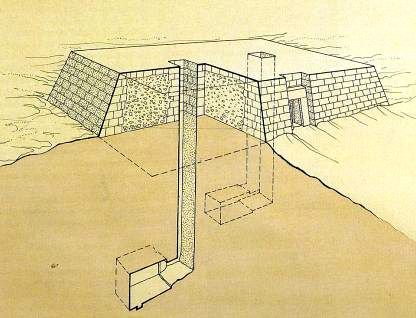
Tombs of the elite had plaster walls incised and painted with hieroglyphics, sacred symbols, and decorative scenes. Also, adding layers made a tomb more important.

PYRAMIDS
According to the beliefs of ancient Egyptians, a great rock rose out of primordial waters at the beginning of time to receive rays of the sun on its pointed top. The pyramid shape represents this concept. Evolving from the ancient mastaba, the sloping sides of a pyramid also avoid destruction by leading the wind up and over, especially with the pelting of sand that takes place during desert storms.
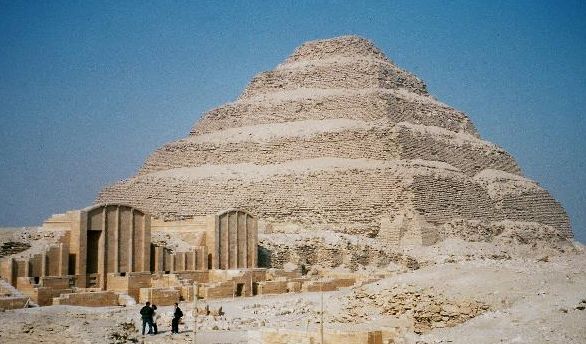
The first real pyramid was "stepped" in the ziggurat form. Imhotep designed this pyramid for King Zoser ca 2778-2723 BC. Notice the structures below and to the left of the pyramid and you can see that pyramids do not stand alone. With them is a mortuary complex including other tombs, temples, shrines, altars, courtyards, and even palaces - all surrounded by protecting walls. Below is a closer view of an imposing wall and entry into a mortuary complex.
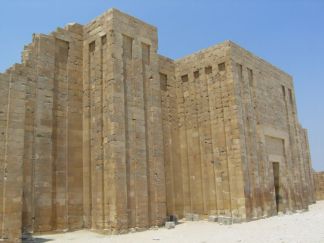
In the third and fourth dynasties, royalty and high ranking individuals were entombed in pyramids that included a nearby funeral temple. The funeral procession of a pharaoh began at the royal palace. Moving on to the West Bank (place of the setting sun and the afterlife) the coffin with the mummified king would be sailed down the Nile and carried in solemn procession to the temple before final burial in a tomb deep within the heart of the pyramid. Needs for daily life including household goods, clothing, food, and even mummified animals were buried with him.
Laid out on an orthogonal axis with extraordinary accuracy of calculation and measurement, each pyramid is a marvel of engineering. (see text pp. 13 – 15) The precision and stone mass of these megalithic structures signify order and eternity. Originally, the sides of the pyramids were covered with gleaming white limestone and the top was capped with gold so that the sun's rays shot off into the heavens. It is thought that the pyramid worked as a sort of resurrection device, sending the ka of the pharaoh into the next life.
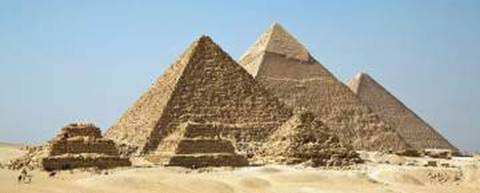
The most famous pyramids are the three at Gizeh (above). Adjacent are three smaller tombs for their wives. For in-depth information go to: http://www.touregypt.net/featurestories/funeral.htm
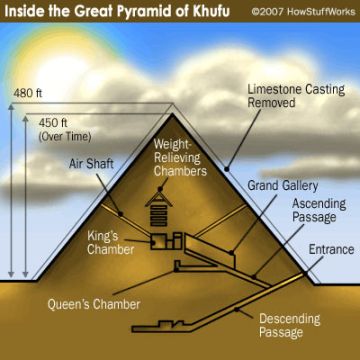
Tombs of the elite were beautifully decorated with hieroglyphics (writing) or painted scenes such this.
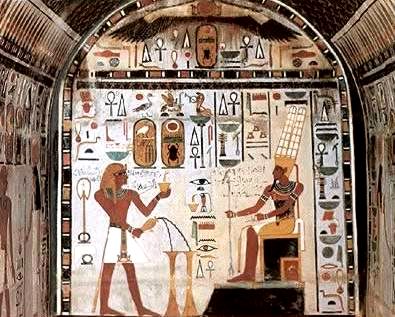
|